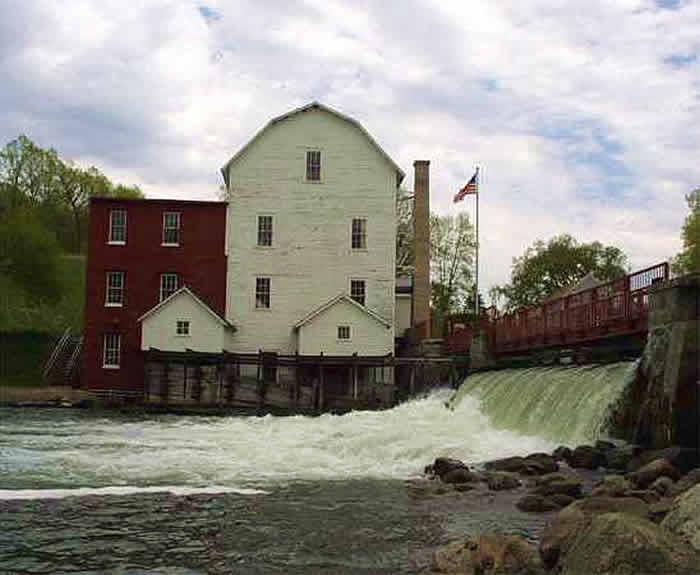
Phelps Mill / Maine Roller Mills
Otter Tail Co. | Minnesota | USA
Watersource: Otter Tail River.
Phelps Mill / Maine Roller Mills
Go east of US 59 at the town of Elizabeth on Cr 10 for 15 miles (becomes Cr 1), then north on Cr 45 for 1.3 miles to the mill, at Phelps Mill Road/318th Ave. & Cr 45.

Maine Roller Mills is a flour mill in Otter Tail County, Minnesota on the Otter Tail River. The mill was constructed in 1888-1889 by William E. Thomas, the owner of a feed and flour operation in nearby Fergus. The mill construction was done by Royal Powers, an accomplished carpenter, able to build with just a plan in his head, not lkooking at blueprints or marking the lumber.
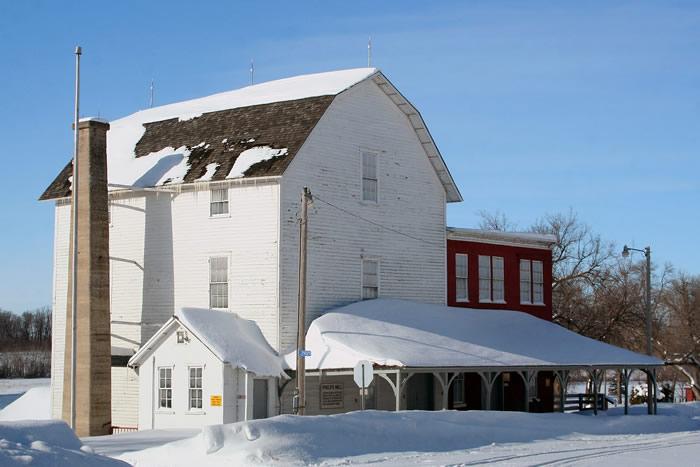
After the early 1900's,it became more efficient to operate mills with steam, gasoline, and/or electricity. Along with the fact that it was cheaper to get the processing done in Minneapolis-St. Paul than to do it locally, the mill closed in 1939. Photo by Rachel Roushey--rachel-roushey.artistwebsites.com/
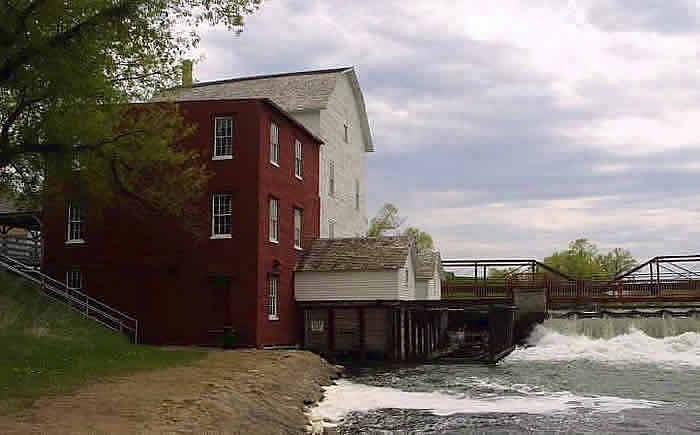
The mill was designed to produce 65-75 barrels of flour a day when it opened in 1889. The mill was quite a success; so much so, that Thomas built an addition in 1895 to gring rye and buckwheat into flour. A stable was built, along with a bunkhouse for overnight patrons, with a general store opening across the road to provide staples. The store may be still in operation. The inadequate 1887 wooden, sandbag, dirt, & gravel dam was replaced in 1908 with one of rubble rock & concrete.
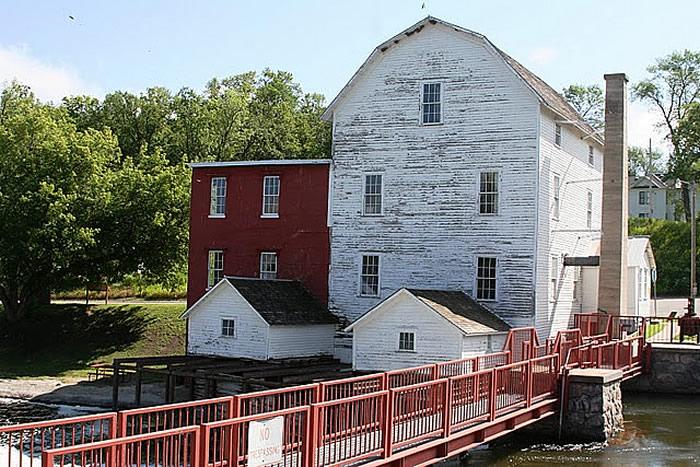
A local Activist, Geneva Tweten, led the fight to preserve the old mill, which was purchased by Otter Tail County in 1965 and is now a county park. The mill was placed on the National Register of Historic Places In 1975; as part of the Phelps Mill Historic District, which also includes the general store and an Italianate miller's house.GPS:46'22.82N,95'49.26W photo by Rachel Roushey-- rachel-roushey.artistwebsites.com/
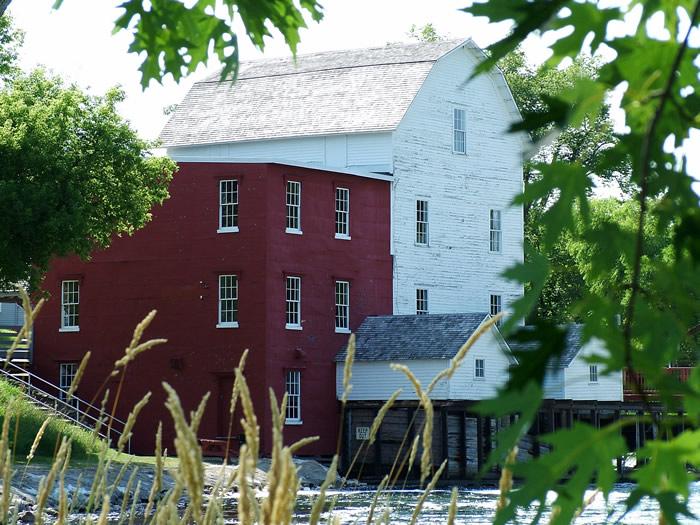
Ray Phelps was hired a chief miller in 1906. The mill was sold to the Farmer Merchantile Company in 1919-20, then, again sold in 1928 to H. G. Everson for $10,500. This amount was $23,000 less than the 1919 sale, showing how little demand remained for a small milling business. The mill had probably deteriorated some, without repairs to futher account for the loss in value.